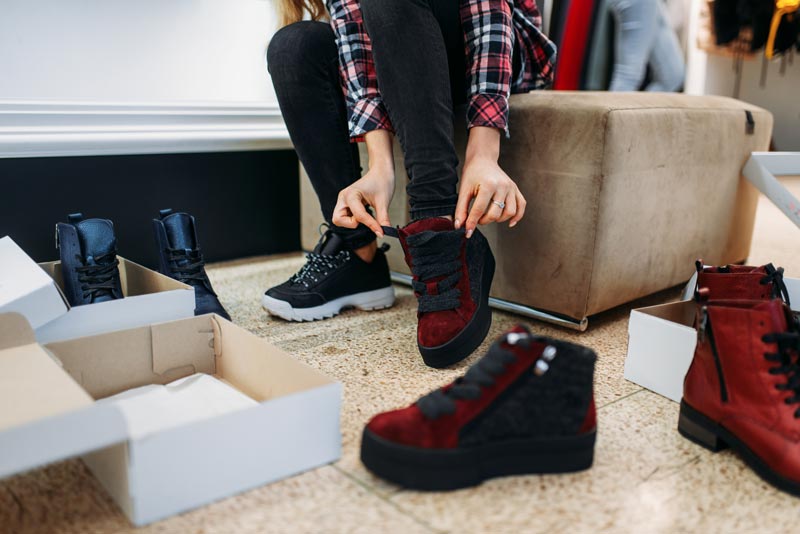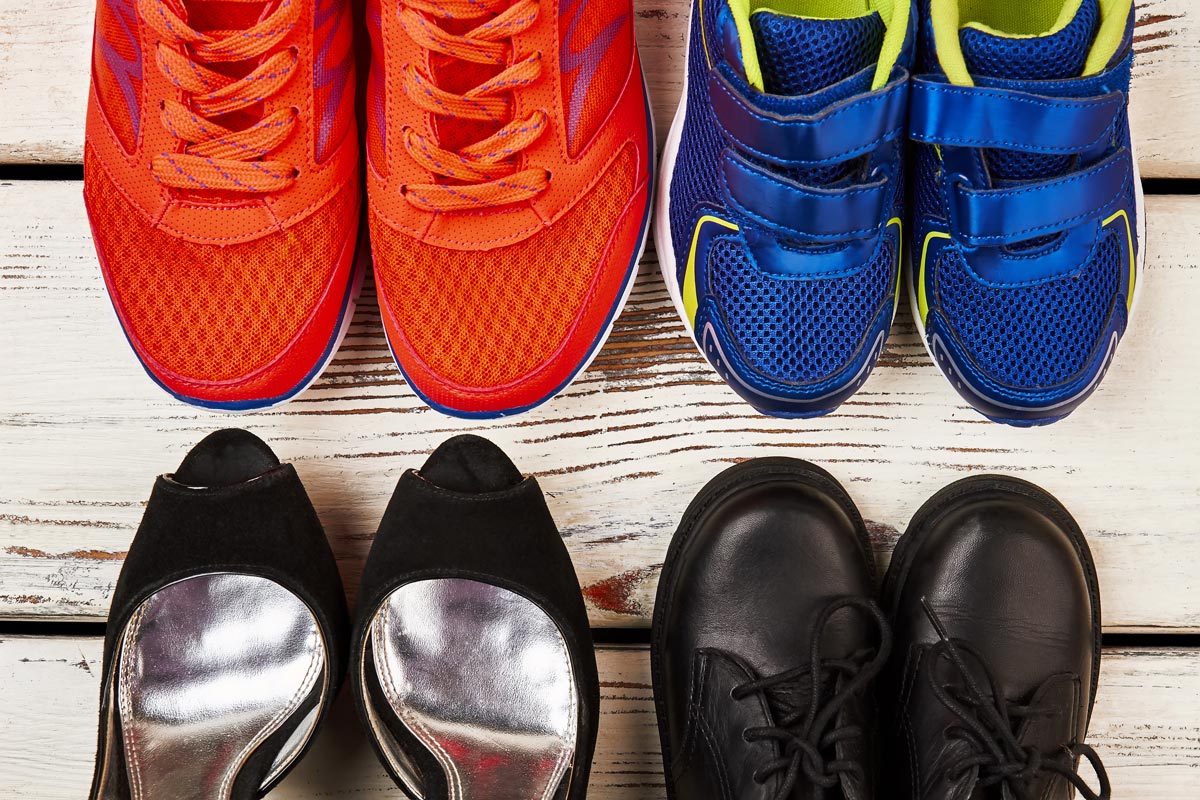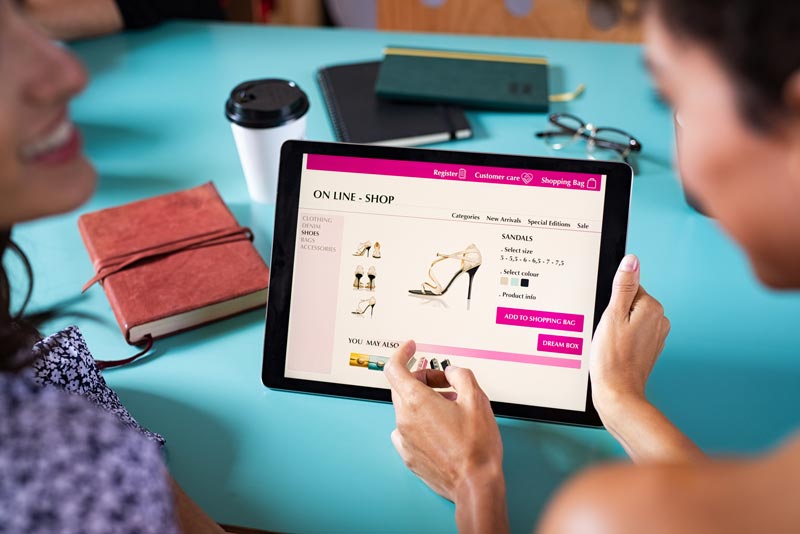I have spent most of my married life moving shoes around the house for my wife. I always feel like it is a never ending task and I always wonder where in the world she got all of these shoes.
It’s simple: Amazon.
And my wife isn’t the only one in the world who shops for shoes on Amazon. There are millions of buyers and sales every year.
If you are looking for a category to sell in on Amazon FBA, you might have just walked into a perfect opportunity (pun intended).
This guide walks (again – intended) you through the basics of selling shoes on Amazon and gives you some helpful tips and tricks along the way to sell shoes.
Why Are Shoes So Popular On Amazon?
Besides my wife’s obsession with shoes, there are a few other reasons shoes are super popular on Amazon. Understanding these different reasons is the first step in building your knowledge on selling in the shoe category.
These reasons are price, availability, ease of ordering, and customer service.
Customers Love Buying Shoes on Amazon
Amazon makes it almost too easy to buy shoes through their platform. They have a ton of brands, great customer service, and super fast shipping. What’s not to love?
Gone are the days of driving around to every shoe store in a 20 mile radius trying to find the perfect pair of shoes in the right size. Now you can do this from the comfort of your own home and have the shoes delivered right to your front door.
Better yet, Amazon provides amazing customer service and free returns on shoes. If you get a pair and they don’t fit, all you have to do is send them back and order another pair!
Why Shoes Are A Great Product To Sell Online
You don’t have to have a business degree to understand why shoes are a great product to sell on Amazon. There are a ton of buyers who love to purchase shoes on Amazon. If you are able to find a style of shoe (or size) that is a fan favorite, you can quickly profit from the sale.
And Amazon makes it a no brainer because they offer their Fulfillment by Amazon service to handle shipping and returns.
All you have to do is find the shoes at a low price and ship them to an Amazon warehouse. Amazon will do all the rest and you can sit back and enjoy the extra income.
What Are The Best Type Of Shoes To Sell On Amazon
It’s one thing to know that shoes sell, but it’s another to understand what types of shoes sell on Amazon. One quick look at the Amazon Best Sellers page, and you probably notice a few things.
The first thing is that people are buying shoes for comfort. We know this because the best-selling shoes are either a Croc-style casual shoe or have memory foam (I personally like to think it’s because they have a great style, but I digress).
Here are a few other types of shoes that have performed well over the years.
Seasonal Trends
Of course, some results are going to be seasonal. For instance, in the winter, boots will be as popular as a casual water shoe is in the summer.
Athletic Shoes
Another great option for sales through the Amazon Fulfillment Center are sneakers. Not only do buyers look for well-made athletic shoes that will stand up to their favorite sport or exercise, but sneakers also play a huge role in fashion statements.
Styles To Avoid
Unless you want to see a lot of returns, there are a few types of shoes that you will want to avoid. Obviously, don’t even think about selling cheap quality shoes.
Additionally, avoid items like high-end footwear for a wedding or prom shoes, or any dress-up shoes that can easily be worn for a one-time affair and then returned.
Brand Approval For Selling Shoes On Amazon
There is one other thing you need to know about selling shoes on Amazon before you get started.
You have to get approved to sell first.
In an effort to keep fake or counterfeit items off Amazon and to uphold exclusive agreements between some manufacturers, the site has put restrictions on specific goods, brands, or categories.
There are many restricted brands on the site, and there are many reasons why that specific brand is on the list.
The terms restricted or gated are often used interchangeably by Amazon to indicate if you are not approved to sell it. Likewise, once you are approved, you will see terms like unrestricted or ungated.
The Approval Process For Gated Brands And Categories
Asking for approval is fairly easy. It’s the waiting part, or the official denial, that is hard.
Take these four easy steps to ask for approval:
- In Seller Central, click the inventory link and select “Add A Product”.
- Run a search for the item or brand you want to sell.
- In the search results, click on the “Listing Limitations Apply” link, located across from the item.
- Click the “Request Approval” button to begin the application process.
Once you ask to be approved, the next step is waiting. Sometimes, you may get approved immediately.
But, many people must submit required documentation in order to be approved.
Tips to Get Approved
If you ask for approval and get a response back that asks for more information, you may need to upload the following:
- Wholesale invoices
- A letter from the manufacturer or brand owner
- Other types of documentation
Some information or documentation requested will be easier to obtain than others.
Wholesale Invoices
Obtaining wholesale invoices is relatively self-explanatory and not difficult. However, sometimes you may have to provide more documentation.
Known Brands
Apply using well-known brand items. This will give you a much better shot at being approved to sell a gated shoe category as opposed to first trying to get approved to sell your own private label.
Even if you don’t plan on selling that particular brand from an established shoe company, using the name helps with the approval process and gets you on your way to being approved for selling high-quality shoes.
No Overseas Invoices
Buy local or direct from a manufacturer. When you apply for a restricted category or product, be sure to source your shoe products from a local supplier.
Amazon does not usually accept invoices from China or other overseas manufacturers.
Keep Trying
If you apply and get denied, don’t give up hope. There could be a number of reasons why you were denied, and it doesn’t mean it is the end of the road.
- If the reason is that you have not yet become established as a reliable and excellent Amazon seller, it’s time to build your reputation.
- Double-check your application requirements to make sure you qualify. Check quantities to make sure you meet the minimum quantity requirement for each invoice.
- Go into Seller Central and check your active applications regularly to see if you are eligible to reapply.
- Try again in 3 to 6 months, and don’t be afraid to keep trying until you get the go-ahead. Often sellers are approved a few months down the road because they have improved their overall selling metrics.

Figuring Out Shoe Rankings & Variation Differences
Selling shoes on Amazon has changed over the past few years.
Early Amazon shoe sellers arrived early in pre-coffee hours of the morning simply to wait in line at a shoe store with a “going out of business” sale.
Or they spent hours weeding through shoe sales ads or even dragged themselves out of bed on the day after Thanksgiving to catch a Black Friday sale.
These sellers did their research, but sometimes the shoes just didn’t sell. And the sellers got caught holding the inventory and not being able to make a profit.
With research and product sourcing tools, the days of randomly grabbing whatever is available in hopes of making a sale will soon be behind us.
One of the best tools for an online seller to market potential customers is to check data reports such as sales rank history. However, when it comes to shoes, you also need to consider the variation differences in addition to seller rank.
What’s The Difference?
One of the biggest differences between sourcing items like toys or books and trying to find the right shoes to sell is that with shoes there is a wide range of variations.
You might see that a specific brand and style of shoe is ranking well, but the rank of shoe is not the only thing to consider. What you don’t see is what sizes within that shoe style are actually selling.
In addition to shoe ranking, you will see a major change in profit margin when you pay close attention to variations.
If you take a quick look at a page, you might see that a certain shoe is selling well.
But that’s only a part of the picture.
What you probably didn’t notice is what size or color of that shoe is actually driving up its rankings.
Color And Size
The two most important variations are the color and size of a given shoe. As you can imagine, shoes come in all different sizes and colors. It may be the black variety in a size 7 that is selling so hot on a listing.
If you grabbed the orange and pink polka-dotted size 10 of the same shoe brand and style, that shoe might never sell.
Variations Expected To Sell
To get the most out of your expensive shoe sales, you will need to sell footwear that people want and are willing to pay for. Some of this will have to do with fads, but some styles and sizes of shoes sell fairly regularly and constantly.
In the US, the average shoe size for men is a size 11, and an 8.5 for women. Knowing this, you are armed with the information that you will most likely sell men’s shoes between sizes 9 and 12 and women’s shoes between sizes 7 and 9 faster than you would sell a size 2 pump or a size 14 basketball shoe.
Color is also a factor. Even though there are occasional flamboyant shoe fiends ready to make a large shoe purchase to buy uplandish styles, most people are not that flashy or risky in their sense of style.
Neutral color shoes will be more likely to sell than other colors. So, stock up on black, tan, or brown when given the choice.
Finding Profitable Shoes To Sell
When you are looking for shoes to flip on Amazon, there are three major ways you can source:
- Retail Arbitrage – Actually going to a shoe store and scanning different shoes and seeing what could sell for a profit.
- Online Arbitrage – Going to an online storefront and searching through to find profitable flips.
- Wholesale – Talking with a manufacturer and taking their product to Amazon to sell.
I personally love to recommend online arbitrage to all new sellers of shoes. I do this for two different reasons:
- Purchasing shoes takes a lot of data analysis. When you first start selling shoes, you will spend hours researching and trying to understand what shoes will actually sell. It’s way easier to do this on a computer than on a cell phone in a store.
- There are some amazing tools out there that can shorten the learning curve and provide you with exactly the data you need to make educated purchasing decisions. My personal favorite is Tactical Arbitrage. Learn more about the software here.
You can grab a free trial of Tactical Arbitrage here.
Final Thoughts
Selling shoes can be a profitable business venture for any Amazon seller. Although the category is restricted and there is a learning curve, if you are willing to put in the time, you can make a good profit.
Once you decide to start selling shoes, you will want to spend some time learning about the different variations and make sure to actually find shoes that sell on a regular basis.
Tools like Tactical Arbitrage can help aid you in finding the perfect shoe and make sure all of the data is there to make an educated decision.


